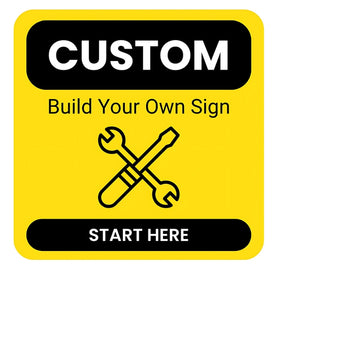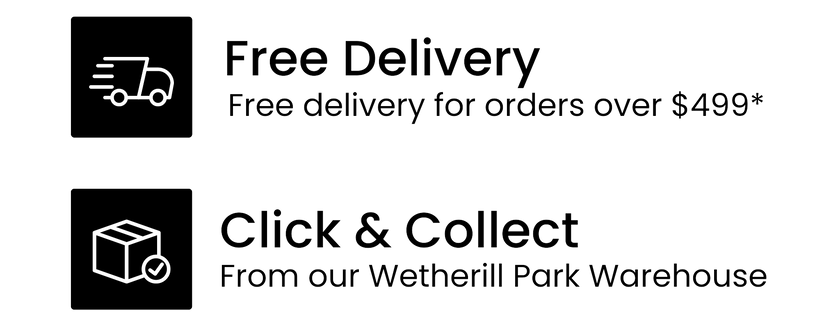Workplace safety is more than just a checklist item, it’s a legal and moral obligation. Whether you’re managing a construction site, warehouse, retail store or office, having the right workplace safety signs in place is essential for protecting your team, visitors, and business.
In Australia, workplace safety signage isn’t just recommended, it’s required by law under the Work Health and Safety (WHS) regulations. These signs communicate vital information about potential hazards, required behaviour and emergency procedures, helping to prevent injuries and ensure your business is compliant with Australian safety standards.
If you’re not sure what signs you legally need to display, or whether your current signage is up to scratch, this guide will walk you through everything you need to know.
Why Safety Signage Matters
Accidents in the workplace can have serious consequences, ranging from minor injuries to major legal liabilities. Clear, well-positioned safety signs help employees and visitors understand risks and act accordingly.
But beyond the practical, safety signage compliance is a legal requirement. According to Safe Work Australia’s Model WHS Regulations, businesses must display appropriate safety signs where hazards are present, personal protective equipment (PPE) is mandatory, or emergency information must be easily accessible.
The Main Categories of Workplace Safety Signs
In Australia, workplace signs follow standardised formats defined by AS 1319:1994 – Safety Signs for the Occupational Environment. This standard outlines how signs should look, where they should be placed, and what categories they fall into.
Let’s break them down:
1. Mandatory Signs

These signs indicate that a specific action must be taken. You’ll typically see these in areas where PPE signage is required, for example, signs that instruct workers to wear safety glasses, helmets, or high-vis clothing.
Mandatory signs are round with a blue background and white symbols.
Explore our full range of compliant PPE signage to ensure you meet legal requirements.
2. Warning Signs

Used to alert workers to potential hazards or conditions that may cause injury. Think: “Forklifts Operating” or “Slippery Surface.”
These signs feature a yellow triangle with a black border and icon, helping them stand out clearly in high-risk environments.
3. Prohibition Signs

These tell people what they must not do. Common examples include “No Smoking” or “No Entry.”
Prohibition signs are circular with a red border, white background, and black symbols with a bold red diagonal slash to show the restriction.
4. Danger Signs

Reserved for life-threatening hazards, such as “High Voltage” or “Confined Space.” These signs are critical in industrial and construction environments.
They feature a red “DANGER” label in a black oval, helping draw immediate attention.
5. Emergency Information Signs

These point to emergency exits, first aid stations, and fire equipment. Every workplace must mark these locations to ensure quick response in an emergency.
Emergency signs are green with white text or symbols.
At eSafety Supplies, we stock a variety of emergency signage solutions that meet Australian standards and keep your site prepared.
What Are You Legally Required to Display?
Under WHS laws, the exact safety signage required will depend on the nature of your workplace and its specific hazards. However, here are some legal obligations that apply to most Australian businesses:
-
Clearly marked emergency exits in all buildings.
-
PPE signage wherever protective equipment is mandatory.
-
Fire extinguisher and fire blanket signs positioned above or next to the equipment.
-
First aid signage to show the location of medical kits or rooms.
-
Hazard signs where machinery, chemicals, or environmental dangers are present.
-
Prohibition signs to enforce rules such as restricted areas or banned behaviours.
Failing to display the right workplace safety signs can lead to penalties, fines, or worse, injury to your team.
Placement and Maintenance
It’s not enough to simply buy the right signs, they need to be placed correctly and kept in good condition.
Here’s how to ensure your signs are effective:
-
Position signs at eye level and in a visible, unobstructed location.
-
Use durable, weather-resistant materials if your signage is for outdoor use.
-
Conduct regular inspections to ensure signs aren’t faded, damaged, or covered.
-
Replace signs immediately if they’re no longer legible or relevant.
Need help finding the right products? Our team at eSafety Supplies can help you assess your site and choose compliant signage that fits your layout and needs.
When to Update or Review Signage
Workplaces change and so should your signage. You’ll need to review your signs if:
-
You change your site layout or introduce new machinery.
-
New staff are unsure of safety protocols.
-
Your WHS inspection report highlights missing or outdated signs.
-
There’s a change to safety legislation affecting your industry.
A quick audit of your existing signs can go a long way in preventing costly risks.
Workplace safety isn’t something to take lightly and the right signs can make all the difference. Complying with safety signage requirements ensures not only the well-being of your team but also the legal security of your business.
At eSafety Supplies, we’re proud to offer a wide selection of Australian Standard-compliant safety signage for every type of workplace. Whether you’re after PPE signage, emergency exit indicators, or hazard alerts, our signs are built for durability, clarity, and compliance.
If you're unsure about your current signage or need help putting together a custom solution, contact our team today.





